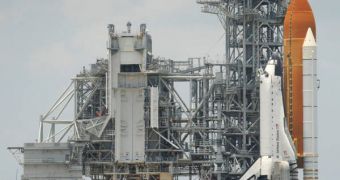In 1908, the Siberian region of Tunguska saw no less than 830 square miles of its forests flattened down in one of the largest explosions the world had ever seen. Since day one, experts around the world hypothesized that the devastation occurred either on account of a secret Russian nuclear test, or because a comet had fell in the area. At the time, everyone who knew about the disaster froze in fear at the idea that the comet could have fell in a populated area, possibly killing millions. Now, researchers at the Cornell University confirm that a comet indeed hit, using 21st century technologies for the job.
The CU James A. Friend Family Distinguished Professor of Engineering Michael Kelley, the leader of the new research, says that the investigation is “almost like putting together a 100-year-old murder mystery. The evidence is pretty strong that the Earth was hit by a comet in 1908.” His team came to this conclusion after it analyzed the most seemingly unrelated event – the take-off of a space shuttle. By taking a closer look at the craft's exhaust plumes, the experts were able to correlate them with the weird events that followed the 1908 incident for a couple of days.
One of the things that most amazed people at the time was the fact that they could see brilliant clouds at night, a phenomenon that is usually impossible, and also the fact that the noctilucent (glow-in-the-night) clouds were formed a day later, many thousands of miles away from the original impact zone. These clouds are almost entirely made up of dust particles, and are created only at very high altitudes, under freezing conditions.
The research team said that the enormous amount of water vapors spewed in the planet's atmosphere by the comet's icy core got stopped at high altitudes by the tremendously energetic swirling eddies of a phenomenon known as two-dimensional turbulence. The same is seen happening once space shuttles take off, as they inject more than 300 metric tons of water vapor into the air. The water then travels to the polar regions, where it raises to about 55 miles above the ground, and forms these clouds.

 14 DAY TRIAL //
14 DAY TRIAL //